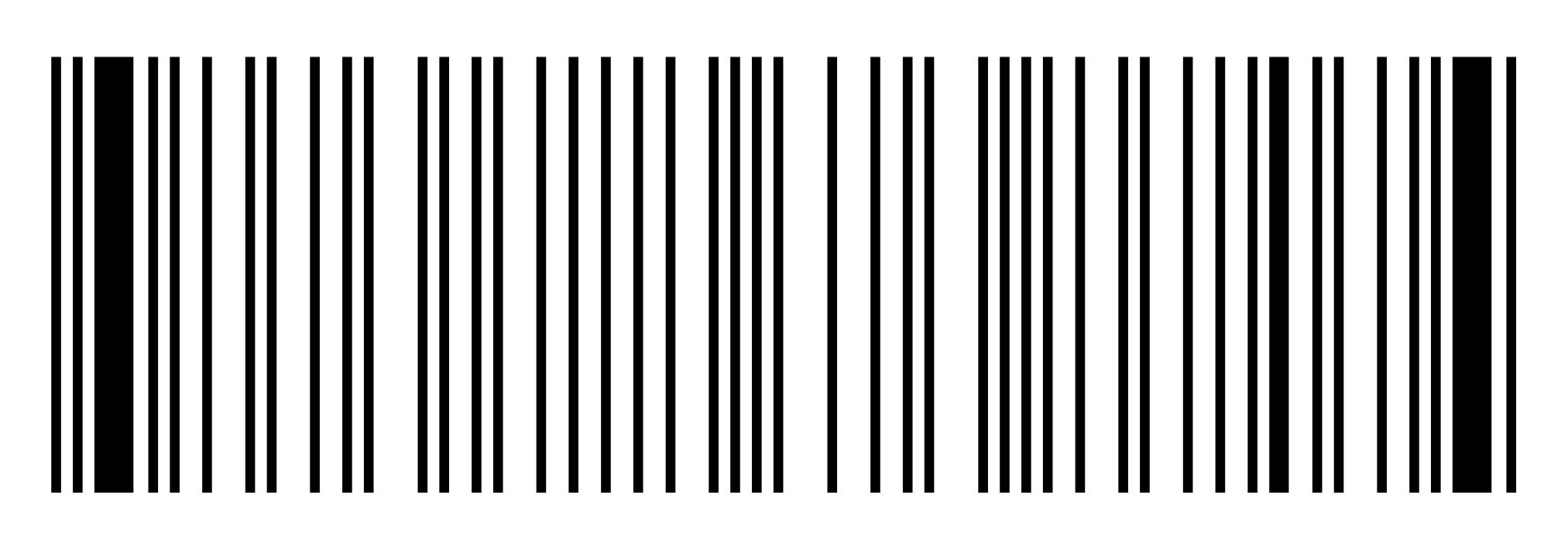Barcode Introduction
Bar code is a technology that has received much publicity in the past few years. Widely implemented in the retail marketplace, it is rapidly gaining increasing visibility in a broad range of diverse applications.
A bar code symbol consists of a series of parallel, adjacent bars and spaces. Predetermined width patterns are used to represent actual data in the symbol. A simple bar code symbol is illustrated.

Simple BarCode Symbol. A bar code symbol consists of a series of varying width parallel bars and spaces. One of a number of encodation schemes is used to represent information by the width of the bars and the spaces between the lines.
Bar code can be thought of as a printed version of the Morse code, with narrow bars representing dots, and wide bars representing dashes. To read the information contained in a bar code symbol, a scanning device such as a light pen is moved across the symbol from one side to the other, as shown on the picture. As the scanning device is moved across the symbol, the width pat¬tern of the bars and spaces is analyzed by the reading equipment and the original data is recovered. Some scanning devices do not require the operator to provide the scanning motion: an electronic scanning system or moving optical elements allow the symbol’s bars and spaces to be sequentially examined automatically.

Scanning is the act of acquiring the information encoded in a bar code symbol. A scanning device for bar code symbols has an active spot that is moved through the symbol from one side to the other, crossing every bar and space. The reader technologies in common use accomplish this through various manual, mechanical, and electronic means.
Bar code is an automatic identification technology. It allows real-time data to be collected accurately and rapidly. But bar code by itself does not solve problems. The combination of bar code with appropriate computer hardware and application software creates the potential for improving performance, productivity, and, ultimately, profitability.
This book provides a thorough background of the technology of bar coding. It reviews applicable equipment and outlines selection criteria. It also presents information on techniques and approaches to system integration and examines several applications in a broad range of industries.
|